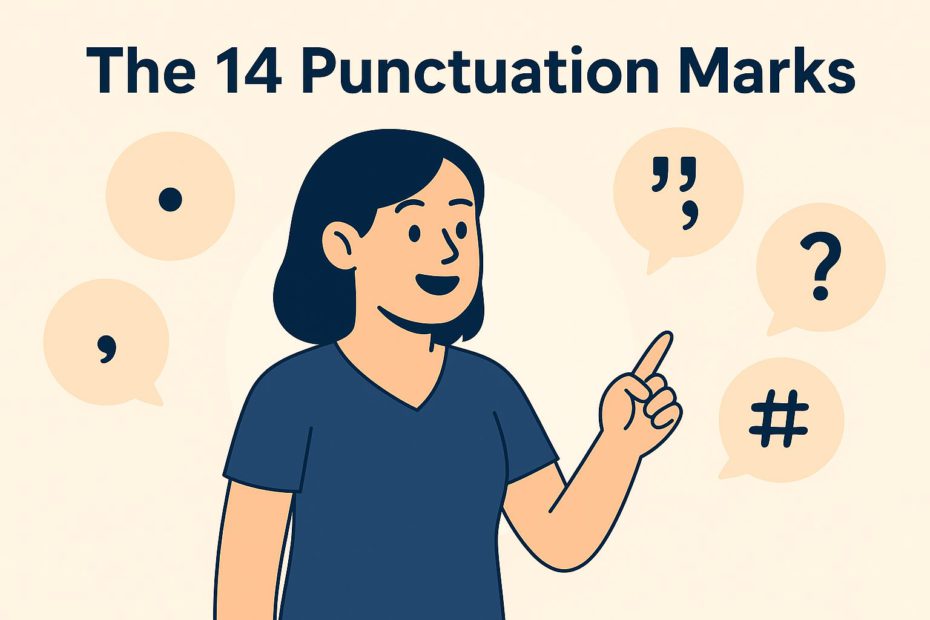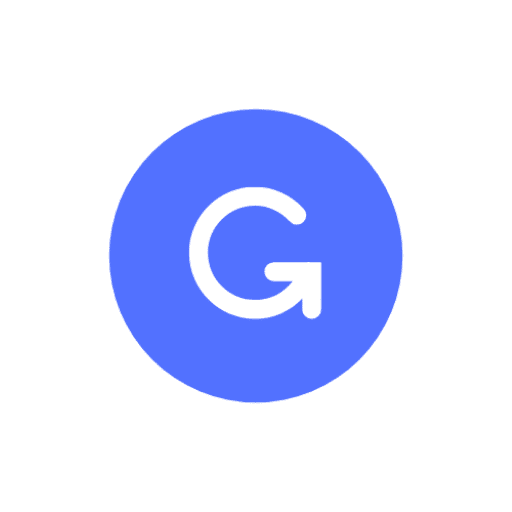Punctuation is the silent partner in every well-written sentence. Though small and often overlooked, punctuation marks guide readers, clarify meaning, and prevent confusion. In English, there are 14 essential punctuation marks, each with a unique function. Understanding how and when to use these marks can dramatically improve your writing style, whether you’re crafting emails, academic papers, or blog posts.
Let’s explore these punctuation marks, their rules, and practical examples that show how they bring order and meaning to language.
1. The Period (.)
Primary Function: To indicate the end of a sentence.
The period, also known as a full stop, is the most basic punctuation mark. It marks the end of a statement that conveys a fact or expresses an opinion.
Examples:
- I love learning English.
- She went to the store.
Other Uses:
- Abbreviations: Dr., Mr., etc.
- Decimal Points: 3.14
- Bullet Points/List items: First. Second. Third.
Avoid:
- Using periods with questions or exclamations.
- Overusing periods in abbreviations not standard in formal writing.
2. The Comma (,)
Primary Function: To separate elements within a sentence.
Commas help break up information to make sentences clearer and easier to read. They can separate items in a list, clauses, and adjectives.
Examples:
- I bought apples, oranges, bananas, and grapes.
- Although it was raining, we went outside.
Common Uses:
- After introductory phrases: “After dinner, we went out.”
- To divide coordinate adjectives: “It was a long, exhausting day.”
What to avoid:
Comma splices — joining two complete sentences using only a comma is incorrect.
3. The Question Mark (?)
Primary Function: To end a direct question.
The question mark is simple—use it when asking something directly.
Examples:
- Where are you going?
- Did she pass the test?
Tips:
- Don’t use question marks for indirect questions: He asked if I was okay.
4. The Exclamation Mark (!)
Primary Function: To express strong emotion or emphasis.
Use exclamation marks sparingly to convey excitement, surprise, or urgency.
Examples:
- What a beautiful day!
- Stop right there!
Caution:
Too many exclamation marks can weaken your writing and make it seem unprofessional. Use them only when truly needed.
5. The Colon (:)
Primary Function: To introduce information.
Colons are used after an independent clause to introduce lists, explanations, or quotations.
Examples:
- Bring the essentials: water, snacks, and sunscreen.
- She had one goal: to win.
Other Uses:
- Introducing dialogue or a quote: He said: “We must act now.”
- In time expressions: 3:45 p.m.
6. The Semicolon (;)
Primary Function: To connect closely related ideas.
Semicolons join two independent clauses that are related but not connected by a conjunction.
Examples:
- She studied all night; she was determined to pass the exam.
- He’s smart; she’s clever too.
Also used in lists where commas are already present:
- For the conference, attendees came from Albany, New York; Dallas, Texas; and Portland, Oregon.
7. The Dash (—)
Primary Function: To insert a pause or add emphasis.
The dash (specifically, the em dash) is often used for dramatic effect or to set off additional information.
Examples:
- I wasn’t sure—until I saw it for myself.
- He brought the essentials—water, a flashlight, and a first-aid kit.
Tips:
- Avoid overusing em dashes. Use them for clarity, not clutter.
8. The Hyphen (-)
Primary Function: To join words and split syllables.
Hyphens create compound words and are used in some prefixes or suffixes.
Examples:
- A well-known author.
- Re-enter the password.
Avoid:
Using hyphens in place of dashes—they’re not interchangeable.
9. Parentheses ( )
Primary Function: To insert extra information.
Parentheses are used to insert extra details or clarifications that are not essential to the main sentence but provide helpful context.
Examples:
- The movie (which was released in 2022) was a hit.
- She gave me a ride (thank goodness!) when I missed the bus.
Tips:
- When the content within parentheses forms a complete sentence on its own, the period should be placed inside the closing parenthesis.
10. Brackets [ ]
Primary Function: To add clarification or editorial comment.
Brackets are commonly used in quoted material to indicate changes or explanations added by someone other than the original speaker or writer.
Examples:
- “She [the teacher] was very helpful.”
- “He said he would arrive [by noon].”
11. Curly Braces { }
Primary Function: Mostly used in technical or mathematical writing.
Curly braces, or braces, group items together in programming, equations, or to denote sets in mathematics.
Examples:
- In math: {x, y, z}
- In coding: function() { return true; }
Not typically used in general or formal writing.
12. Quotation Marks (“ ”)
Primary Function: To enclose direct speech, titles, or specific terms.
Quotation marks indicate dialogue or something taken verbatim from another source.
Examples:
- She said, “I’m on my way.”
- He called it a “masterpiece.”
Other Uses:
- To emphasize sarcasm or irony: He’s a “genius.”
13. Apostrophe (’)
Primary Function: To indicate possession or contractions.
The apostrophe has two primary uses: showing ownership and shortening phrases.
Examples:
- Possession: Sarah’s book, the dog’s leash.
- Contractions: can’t (cannot), it’s (it is).
Common Mistake:
It’s = it is
Its = belonging to it
14. Ellipsis (…)
Primary Function: To show omission or unfinished thought.
Ellipses indicate a pause, trailing thought, or omitted text in quotations.
Examples:
- “I thought you were going to…” (pause in speech)
- “She said she would call… but never did.” (suspense or omission)
Why Punctuation Matters
Without punctuation, even the most beautifully written sentences become unclear or misleading. Consider the classic example:
Let’s eat, Grandma!
vs.
Let’s eat Grandma!
The comma saves Grandma from becoming dinner.
Punctuation helps us:
- Convey tone and emotion
- Avoid ambiguity
- Structure our thoughts clearly
- Create rhythm and flow
Whether you’re writing professionally or casually, understanding these 14 punctuation marks will elevate the clarity and impact of your words.
Final Thoughts
Mastering punctuation isn’t about memorizing stiff rules—it’s about understanding how these marks give voice to your writing. Just like a well-timed pause in speech, the right punctuation mark can make your writing more powerful, more persuasive, and more readable.
So the next time you’re unsure whether to use a dash or a comma, or when to break up a sentence with a semicolon, come back to this guide. With practice and attention, you’ll soon use punctuation like a pro.

